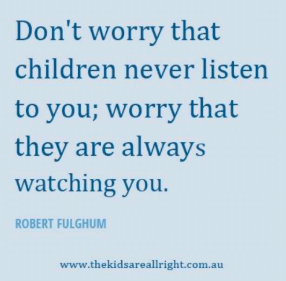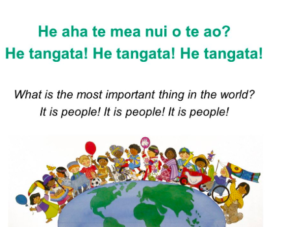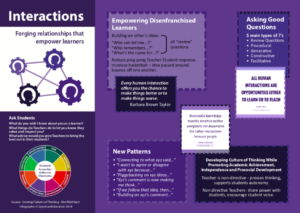It’s all about Relationships
The Cultural Force of Interactions…
In one of the most powerful educational TED talks, Rita Pierson’s ‘Every Kid Needs a Champion,’ she clearly articulates the need for teachers to develop significant positive relations with their students. She talks about the value and importance of human connection. “Kids don’t learn from people they don’t like,” she says. John Hattie’s research parallels this informing us the Teacher-Student relationship is one of the top practices to affect learning and correlates to a high impact on student learning.
In his book, Creating Cultures of Thinking, Ron Ritchhart discusses the Cultural Force of Interactions – forging relationships that empower learners. He defines this as ‘showing a respect for and valuing of one another’s contributions of ideas and thinking in a spirit of ongoing collaborative inquiry.’ He writes about two categories of interactions – Teacher-Student and Student-Student. Ron says, “by creating new patterns of discourse, providing students with roles that structure learning, and asking good questions, we can do much to shape the interactions of our classrooms”

Teacher-student relationships are critical. They are the basis upon which learning occurs. Strong student-student interactions come from using and modelling discourse protocols, providing sentence stems for conversations and encouraging students to go deeper in their communications.
Here are eight ideas…
Use connection rituals. There are many of these and two of my favourites are the Triple H – Students choose a Handshake, High-five or Hug when they enter your classroom or at the end of the day invite students to share with the class someone they Appreciated today, would like to Apologise to, or an Aha moment they had.
Survey Students. Ask them what they want you to know about them as a learner? What advice might they offer to ensure you can bring out the best in them? A very enlightening prompt is to ask students, “what do Teachers do to let you know they respect and value you?”
Respect students ideas, thoughts and thinking. When students give an idea or answer to a provocation, instead of labelling the idea with judgement words such as; good, excellent, awesome, fantastic, etc, show you value their answer by saying “thank-you” (you are thanking their willingness or risk-taking to share, which in turn boosts their confidence and trust to share again), paraphrasing their response – in an attempt to understand, ask a clarifying question to gain more insight or use the Thinking Routine “What Makes You Say That?”
Actively celebrate mistakes & confusion. Making mistakes is a part of being human and can be a key learning tool. Creating an environment where it is safe to fail is essential in building positive relationships. Ensure students know that ‘learning’ is learning what you don’t know, rather than just practicing what you do know. Spend time acknowledging students mistakes and how they have learned from them. The same is true for confusion. At any point of confusion, learning stops. The brain needs to sort out the confusion before going onto the next level. I always love it when a student says “I’m confused!” I stop the class and let them know they are about to see ‘learning’ happen. Once I clear up the confusion, or another students does, by explaining it in a different way, and the penny drops, students see learning happen. The “ahhh” sound is one of my favourites! Obviously you need a strong learning culture in your classroom to do this.
 Role Model Interactions. After you have introduced, explained and given explicit guidelines of how you would like students to interact, invite some students to come to the front of the class to demonstrate. The remaining students use the ‘fishbowl’ technique to observe and comment on the effectiveness and give feedback according to the guidelines. I have personally used this when teaching goal setting to ensure students can coach to clarify the goal and question to deepen the purpose.
Role Model Interactions. After you have introduced, explained and given explicit guidelines of how you would like students to interact, invite some students to come to the front of the class to demonstrate. The remaining students use the ‘fishbowl’ technique to observe and comment on the effectiveness and give feedback according to the guidelines. I have personally used this when teaching goal setting to ensure students can coach to clarify the goal and question to deepen the purpose.
Use sentence stems to build on others ideas. Recall or review questions such as who can recall…, or what’s the main idea…, cause a ping pong, back and forth, teacher to one student dialogue, which often leaves the rest of the class out of the interaction. Teach your students ways to have more of a basketball discussion where the dialogue bounces from person to person, causing a higher interaction and often more productive conversation. Sentence stems may include:
-
- Connecting to what xyz said…
- I want to agree or disagree with xyz because…
- Piggybacking on xyz’s idea…
- Xyz’s comment is now making me think…
Asking “good” questions. Teachers’ questions often define the learning in the classroom and good questions can drive learning and promote deep thinking. Ron Ritchhart outlines 5 types of questions:
-
- Review questions ask students to recall previous knowledge or procedures. These are great to start a class to review previous learning and confusions.
- Procedural questions direct student activity and behaviour rather than focus on content. For example, “Do you have your book?”
- Generative questions spark inquiry thinking. There are two types – essential questions which direct the long term exploration, or authentic questions which are content questions to which the teacher does not know the answer.
- Constructive questions promote further understanding. These questions ask learners to connect ideas, make interpretations, focus on the big ideas and extend ideas.
- Facilitative Questions encourage students to explain their thinking, elaborate on their ideas with the intent to make thinking visible.
Practice the reflective toss. Ensure you have understood a student’s meaning by asking, “What makes you say that?” You can also help increase their instruction following by asking, “If you were following these instructions correctly, what would you be doing?”
Ron Ritchhart suggests the practice of forging strong relationships, creating strong teacher-student and student-student interactions becomes even more powerful when we seek not to control learners, we however wish to develop students with agency and interdependence. The more we show respect and interest in student ideas and thinking, the more they will be willing to make their thinking more visible and a culture of thinking is strengthened.
Maya Angelou once said “I’ve learned that people will forget what you said, people will forget what you did, but people will never forget how you made them feel.”
An article about relationships and interactions could never be complete without one of my favourite New Zealand Maori proverbs:


To download a complimentary copy of this infographic please click here
** This article is the seventh in a series of 8, focusing on the 8 Cultural Forces and Cultures of Thinking.
Want to know more?
Please go to www.spectrumeducation.com/cultures-of-thinking-webinar-series for a live webinar or contact us for information about the recorded videos from this series.
To purchase and download all 8 posters please go to www.spectrumeducation.com/cultures-of-thinking-infographics/
Tags: CoT, Cultures of Thinking, Interactions, Karen Boyes, Karen Tui Boyes
Published on Monday, July 1st, 2019, under Cultures of Thinking, Teacher Effectiveness

This is a wonderful Article…I am going to try some of your ideas.Thanks, Karen!
Tena koe Karen,
Respecting students ideas, thoughts, thinking and contributions is definitely something I’ve picked up from your earlier articles and workshops. Thanking my tamariki as they share, shows that it’s ok right or wrong and a thank you isn’t judgemental and it allows all tamariki to feel that their contributions are valued. We use a lot of talk moves before during and after each lesson which helps with digging that little bit deeper to stretch each lesson to the next level.
Thank you for sharing your wisdom in the hope that we can share these golden gems with our future rangatira.
Nga mihi nui
Erin
This article was a great read and will definitely boost my teacher to student relationship. I’m all about whanaungatanga. It’s the heart of any learning no matter what it is. If you don’t have a relationship, you don’t learn. If you don’t feel safe to share your ideas for fear of being put down unintentionally, you don’t learn. Story of my life. I work hard not to be that teacher. I work hard to empower students to know that they have a lot to offer. Even if it is only 10 years worth. It’s still valuable. Tataiako (MOE document) echoes your ideas of teacher responsiveness. Nga mihi nui.